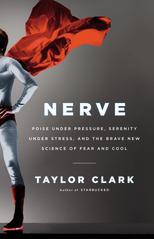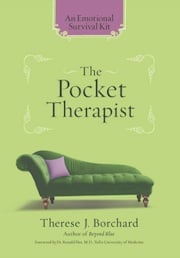
Taylor Clark has written a very compelling and insightful book about anxiety, our amygdala (fear center in the brain), and, in general, what makes us freak out in his new book, “Nerve: Poise Under Pressure, Serenity Under Stress, and the Brave New Science of Fear and Cool.” It was hard to choose which stuff to excerpt, but ultimately I think his “12 Ways to Be Afraid” at the end was the most helpful … what to do with all the research we just learned.
“I’ve built up a short list of the most effective, proven methods that psychology and neuroscience have to offer,” writes Clark. “Fear is a fact of life. All we can do is learn how to be afraid in the right way. So herewith, a dozen quick tips to get us started.”
I’ve excerpted from and consolidated his 12 steps below.
1. Breathe.
By consciously controlling our breath, we can inform our parasympathetic nervous system that things are okay, lowering our heart rate and taking fear down a notch.
2. Put your feelings into words.
Talking or writing about an emotion like fear helps the brain to process it behind the scenes; it allows the mind to disambiguate (i.e. sort out) thoughts and feelings instead of just churning over them repeatedly.
3. Train, practice, and prepare.
Whether you want to make better decisions under stress, handle life-threatening situations with composure, or perform your best when pressure hits, training is the only reliable way to ensure success; through repetition and experience, you program yourself to do the right thing automatically.
4. Redirect your focus.
From nervous student test-takers to anxious athletes to jittery actors, the culprit in cases of meltdown under pressure isn’t FEAR but misdirected focus: we turn our attention inward and grow preoccupied with worries about results, which undercuts our true abilities. Clutch athletes and cool-headed heroes concentrate on the present moment and on the task at hand, a habit we can all develop through practice.
5. Mindfully disengage from worries and anxious thoughts.
Evelyn Behar, the worry expert, suggests two paths for detaching from internal chirping. One is to take the mindfulness route: the more you learn to simply watch your worries and let them coast by without getting engaged with them, the more you see them and their predictable patterns as if from far above. “Or,” Behar continued, “you can postpone worry. You write a worry down and agree that later on you can worry about it for thirty minutes, which frees you up to focus on the moment.”
6. Expose yourself to your fears.

If you want to remain locked into a fear indefinitely, then by all means, avoid the situations that make you anxious. But if you want to give your amygdala a chance to get over a fear, you must expose yourself the things and ideas that scare you.
7. Learn to accept uncertainty.
Anxiety experts like Robert Leahy suggest taking a hint from the well-worn Serenity Prayer, which aspires for “the serenity to accept the things I cannot change, the courage to change the things I can, and the wisdom to know the difference.”
8. Reframe the situation.
“I like to say you can make an emotional molehill into an emotional mountain, which is what people do all the time,” said the Columbia psychologist Kevin Ochsner, who studies how we reappraise situations to adapt our emotional responses. When anxious biases float in, Ochsner stresses the importance of recontextualizing: staying grounded in reason and reminding ourselves of the (doubtlessly more positive) reality of the situation.
9. Joke around.
By poking fun a life’s occasional grimness, we neutralize its venom and lift ourselves above it….Humor is helpful because it lets us play around with concepts and points of view, so anything you can do to find the ridiculous, less serious side of a rough situation will lighten the mood.
10. Build faith in yourself.
Confidence transforms dangerous-seeming threats into challenges we can overcome, it gives us a sense of control over our fate, and it keeps us plugging away at problems until we find a solution instead of just giving up.
11. Keep your eyes on a guiding principle.
Dedication to a higher purpose–be it spiritual belief, altruism, or personal goals and principles–help keep us afloat and pointed in the right direction when everything appears scary or hopeless.
12. Open up to fear unconditionally.
There’s nothing wrong with feeling anxious, ever, over anything at all. Fear and anxiety are part of who we are. Once we drop the pointless, wrongheaded routine about needing to get rid of them, we can carry fear and anxiety around with us through life like friendly companions.
Photo by Gunther. Copyright 1980 Gunther. Image courtesy of mptvimages.com
* Click here to subscribe to Beyond Blue and click here to follow Therese on Twitter and click here to join Group Beyond Blue, a depression support group. Now stop clicking.

